Kodiak Island is the second largest island in the United States and a renowned tourist destination in Alaska. Located in the Gulf of Alaska, Kodiak offers breathtaking natural scenery comprised of green mountains, dense forests, rugged coastlines, and an abundance of wildlife.
| Attraction | Description |
|---|---|
| Kodiak National Wildlife Refuge | A vast refuge offering diverse habitats for wildlife, opportunities for hiking, camping, kayaking, and bear viewing, along with a visitor center showcasing exhibits. |
| Kodiak Brown Bear Center | Provides guided bear viewing tours in a natural setting, offering close encounters with Kodiak brown bears. |
| Fort Abercrombie State Historical Park | Historic WWII military fort with scenic trails, ruins exploration, and beautiful coastal views. |
| Alutiiq Museum and Archaeological Repository | Museum displaying Alutiiq cultural artifacts, highlighting 7,000 years of history, with an adjoining archaeological repository. |
| Kodiak Island Brewing Co. | Nano brewery offering artisan brews crafted with local ingredients, with a taproom for tasting. |
| Baranov Museum | Historical museum in Alaska’s oldest building, showcasing Kodiak’s history from Russian colonial times through WWII. |
| Holy Resurrection Russian Orthodox Cathedral | Historic cathedral with distinctive architecture, offering insights into Kodiak’s Russian Orthodox heritage. |
| Kayaking Among Kodiak’s Fjords and Bays | Opportunities for sea kayaking in Kodiak’s fjords and bays, with potential wildlife sightings. |
| Afognak Island State Park | Park offering a natural habitat for a variety of wildlife, accessible by flight or ferry, ideal for outdoor activities. |
| Kodiak Military History Museum | Museum dedicated to Kodiak’s military history, featuring artifacts, memorabilia, and living history exhibits. |
| Step Beach | A picturesque beach known for its sunset views, tidal pools, and wildlife spotting opportunities. |
| Clamming on Near Island | Guided clamming expeditions on Near Island, known for abundant razor and butter clams, along with other outdoor activities. |
Although remote, visitors will discover plenty of things to see and do during their stay. From hiking and kayaking to bear viewing and learning about native Alutiiq history and culture, Kodiak appeals to outdoor enthusiasts, nature lovers, and history buffs. This article explores 12 of the top attractions to enjoy during your visit to Kodiak, Alaska.
Kodiak National Wildlife Refuge
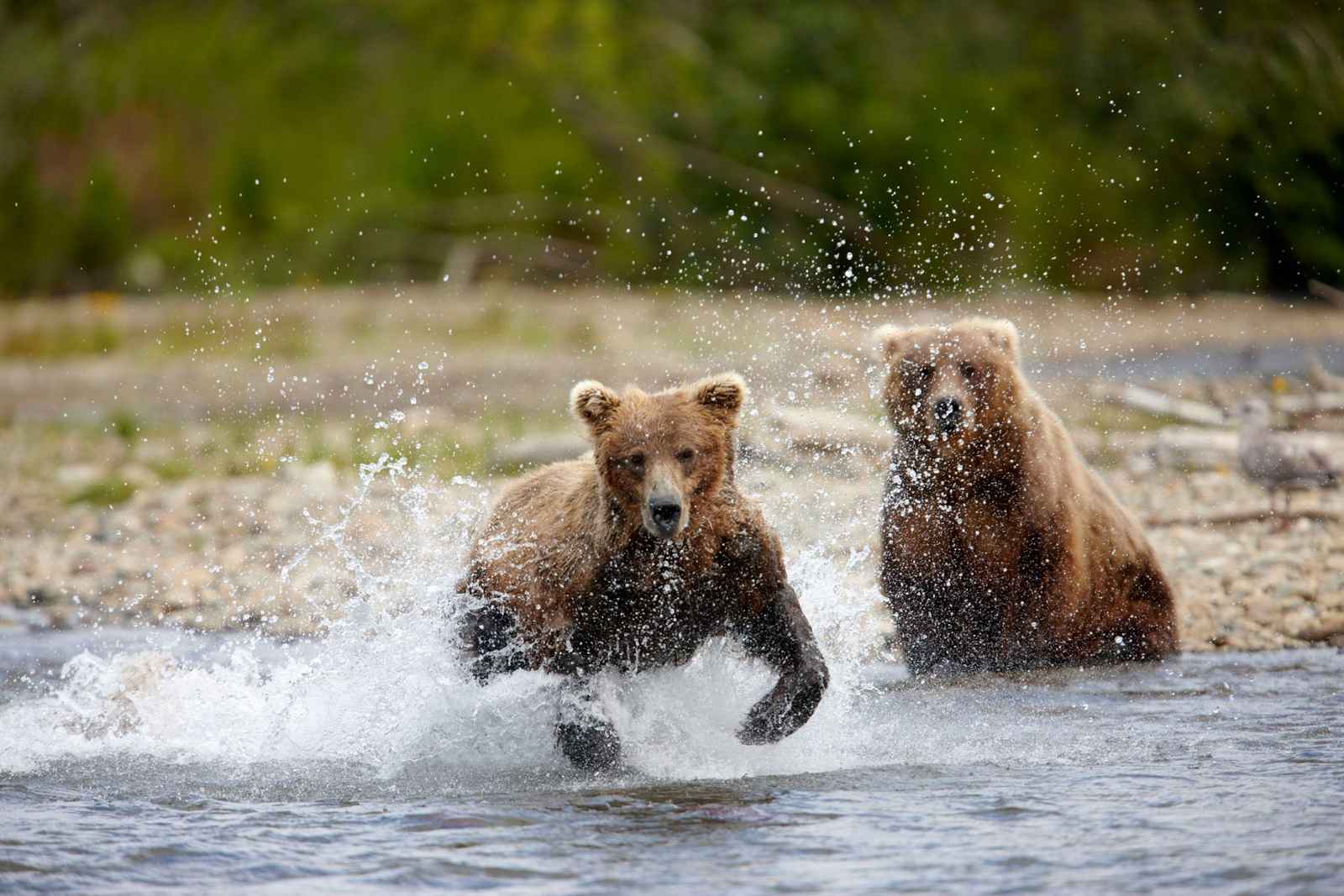
Name and Location: Kodiak National Wildlife Refuge is located on Kodiak Island in southern Alaska, United States. It is one of the largest wildlife refuges in the country, spanning over 1.9 million acres of pristine wilderness.
History and Significance: Established in 1941, the Kodiak National Wildlife Refuge was created to protect the habitat of the Kodiak brown bear, one of the largest bears in the world. The refuge is also home to a diverse array of flora and fauna, including salmon, bald eagles, and Sitka black-tailed deer.
What to Expect: Visitors to the Kodiak National Wildlife Refuge can enjoy a variety of outdoor activities, such as hiking, camping, fishing, and wildlife viewing. The refuge features several scenic trails that wind through dense forests, along streams and rivers, and up into the mountains, offering breathtaking views of the surrounding landscape.
Visitor Information: The refuge is open year-round, but some areas may be closed during certain times of the year to protect wildlife. Visitors are encouraged to stop by the Kodiak National Wildlife Refuge Visitor Center in Kodiak for maps, information, and permits. Camping is allowed in designated areas, and visitors should be prepared for changing weather conditions and bear encounters.
As the second largest national wildlife refuge in the U.S., the Kodiak National Wildlife Refuge protects nearly two-thirds of Kodiak Island. Comprised of mountains, glaciers, forest, tundra, streams, and coastline, the diverse habitat supports Kodiak brown bears, salmon, sea otters, bald eagles and more than 250 species of birds.
Visitors to the refuge have ample opportunities for hiking, camping, kayaking, and bear viewing. Flightseeing tours provide a bird’s eye view of the landscape and wildlife below. The Kodiak National Wildlife Refuge Visitor Center in the city of Kodiak also displays exhibits on native species and highlights refuge attractions like the Karluk Wilderness Lodge and Frazer Lake Fishpass.
Kodiak Brown Bear Center
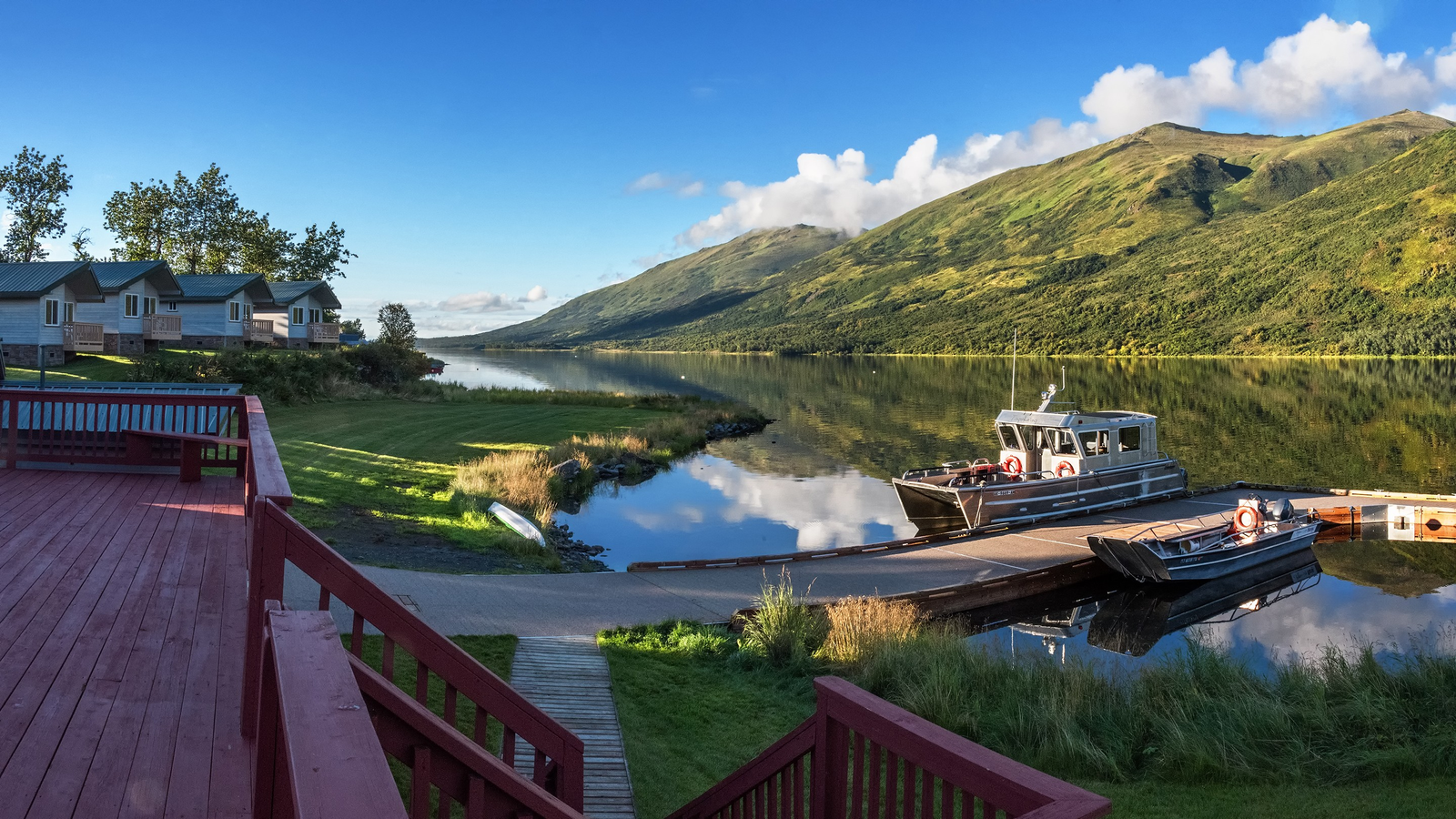
Name and Location: The Kodiak Brown Bear Center is located in Kodiak, Alaska, on Kodiak Island. It is a non-profit organization dedicated to the conservation and education of the Kodiak brown bear.
History and Significance: Founded in 2000, the Kodiak Brown Bear Center aims to promote the understanding and appreciation of the Kodiak brown bear through research, education, and conservation efforts. The center works closely with the Alaska Department of Fish and Game and the U.S. Fish and Wildlife Service to protect the bears and their habitat.
What to Expect: Visitors to the Kodiak Brown Bear Center can learn about the biology, ecology, and behavior of the Kodiak brown bear through exhibits, presentations, and guided tours. The center also offers educational programs for schools and community groups.
Visitor Information: The Kodiak Brown Bear Center is open from May through September. Visitors can explore the exhibits at the center, attend presentations, and participate in guided tours to view the bears in their natural habitat. Reservations are recommended for guided tours.
For close encounters with Kodiak’s iconic brown bears in their natural habitat, the Kodiak Brown Bear Center provides guided bear viewing tours in a protected area along the Kodiak National Wildlife Refuge. Tourists observe bears fishing for salmon, foraging berries, and lounging with cubs from elevated platforms.
One of Alaska’s premier bear viewing destinations, the knowledgeable staff educate visitors on bear behaviors and characteristics while providing safe bear viewing. Guests at the Bear Center Lodge stay overnight in rustic yet comfortable rooms to maximize wildlife sightings. Beyond brown bears, the refuge also holds large concentrations of nesting seabirds, Sitka deer, and bald eagles.
Fort Abercrombie State Historical Park

Name and Location: Fort Abercrombie State Historical Park is located on Kodiak Island, Alaska, near the city of Kodiak. The park sits on the site of a former World War II coastal defense installation.
History and Significance: Established in 1969, Fort Abercrombie State Historical Park preserves the remains of the Fort Abercrombie military base, which was active during World War II. The fort was built to defend the Kodiak area from potential Japanese attacks and played a crucial role in the defense of Alaska.
What to Expect: Visitors to Fort Abercrombie State Historical Park can explore the ruins of the military base, including bunkers, gun emplacements, and other structures. The park also features hiking trails that offer stunning views of the surrounding coastline and forests. Wildlife, such as bald eagles and whales, can often be spotted from the park’s vantage points.
Visitor Information: Fort Abercrombie State Historical Park is open year-round, with camping available from May through September. The park has a visitor center that provides information about the history of the fort and the area’s natural features. Guided tours are available during the summer months.
Historic Fort Abercrombie State Historical Park lies approximately 8 miles northeast of Kodiak. Dating from World War II, the military fort protected Kodiak from Japanese invasion. Now operated by Alaska State Parks, tourists explore the coastal defense fort ruins, walk the scenic cliffs along Miller Point, and observe tidal pools, sea lions, puffins, and whales offshore. Interpretive displays detail Kodiak’s military history.
Hiking trails wend through coastal meadows flush with wildflowers in summer toward scenic overlooks and secluded beaches perfect for beachcombing. Camping facilities invite overnighters to enjoy Fort Abercrombie’s sublime scenery after the day crowds leave.
Alutiiq Museum and Archaeological Repository
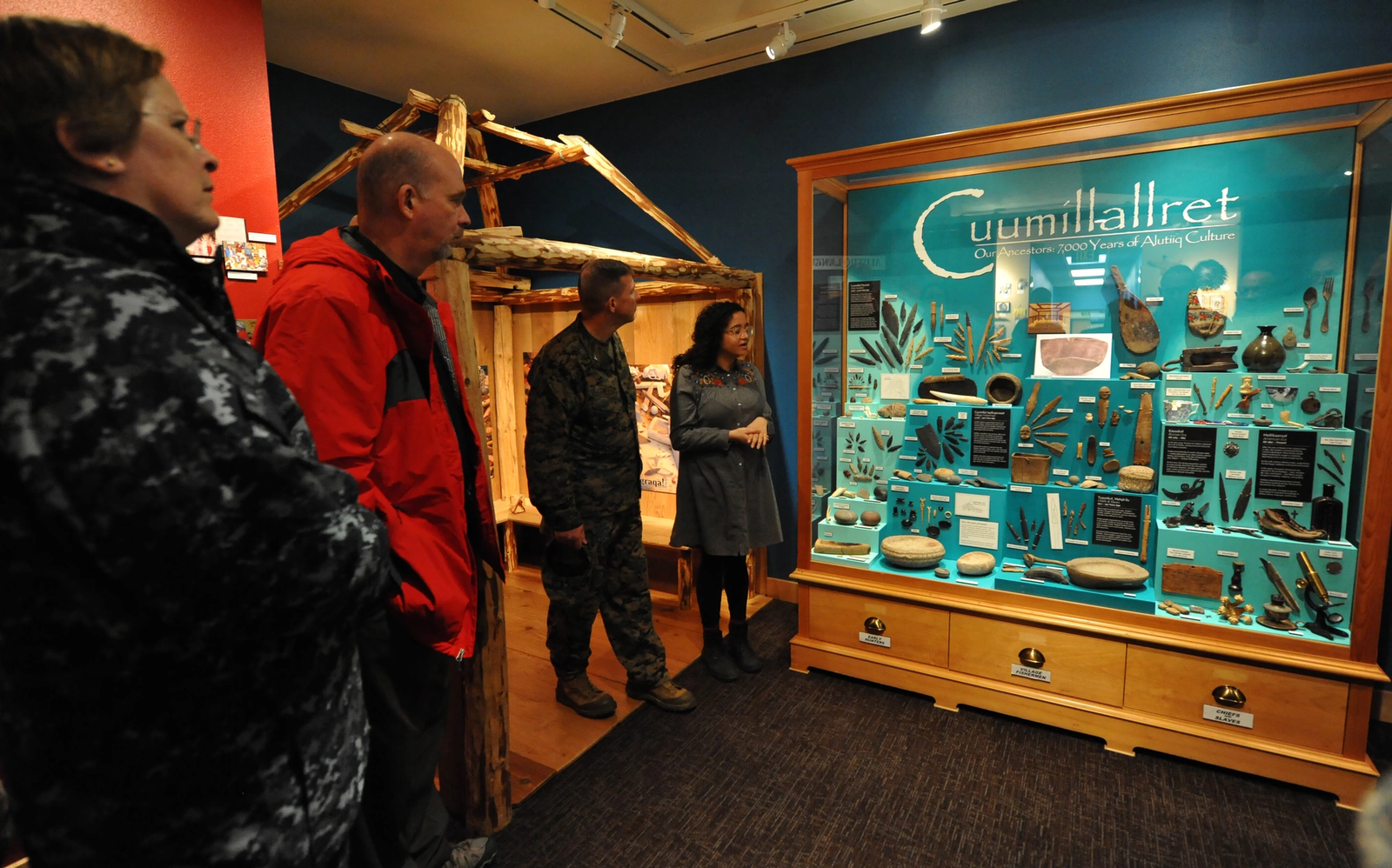
Name and Location: The Alutiiq Museum and Archaeological Repository is located in Kodiak, Alaska. It is dedicated to preserving and sharing the cultural heritage of the Alutiiq people, the indigenous inhabitants of the Kodiak Archipelago.
History and Significance: Founded in 1995, the Alutiiq Museum and Archaeological Repository houses a collection of over 250,000 artifacts, photographs, and documents that showcase the rich history and culture of the Alutiiq people. The museum is a center for research, education, and cultural preservation.
What to Expect: Visitors to the Alutiiq Museum can explore exhibits that highlight the traditional lifestyle, art, and technology of the Alutiiq people. The museum features a variety of artifacts, including tools, weapons, clothing, and ceremonial objects. The museum also hosts workshops, lectures, and cultural events throughout the year.
Visitor Information: The Alutiiq Museum is open year-round, with varying hours depending on the season. Admission fees apply, and guided tours are available upon request. The museum also has a gift shop that offers books, art, and other items related to Alutiiq culture.
To learn about Kodiak’s indigenous Alutiiq peoples, visit the Alutiiq Museum in the city of Kodiak overlooking the harbor. Displaying one of the largest collections of Alutiiq cultural artifacts in Alaska, the museum showcases 7,000 years of Alutiiq art, tools, masks, jewelry and more to depict transformations in their culture.
Rotating exhibits highlight aspects of traditional Alutiiq lifestyle, arts, language and history. The onsite Alutiiq Language Center produces publications and multimedia resources to revitalize the endangered Alutiiq language. The Archaeological Repository next door houses over a million excavated objects in climate-controlled rooms – one of the largest collections of Alutiiq materials.
Kodiak Island Brewing Co.

Name and Location: Kodiak Island Brewing Co. is a craft brewery located in Kodiak, Alaska. It is situated in the heart of downtown Kodiak, making it easily accessible to visitors and locals alike.
History and Significance: Established in 2003, Kodiak Island Brewing Co. has become a popular destination for beer enthusiasts visiting Kodiak. The brewery is known for its unique, handcrafted beers that often incorporate local ingredients and flavors.
What to Expect: Visitors to Kodiak Island Brewing Co. can sample a variety of beers in the brewery’s taproom, which features a cozy, rustic atmosphere. The brewery often has live music and events, making it a lively spot to gather with friends and fellow beer lovers.
Visitor Information: Kodiak Island Brewing Co. is open year-round, with varying hours depending on the season. The taproom offers beer flights, pints, and growler fills, as well as light snacks. Brewery tours may be available upon request.
Kodiak Island Brewing Co. quenches thirsts with artisan brews crafted from Kodiak’s famously pure waters. Located downtown Kodiak along Shelikof Street in a converted WWII-era Army barracks building, the nano brewery pours their selection of ales and lagers on tap in a laid-back taproom lined with hand-carved bars reclaimed from a 1930s era local tavern.
Brews like the Island Amber, Foggy Notion IPA, and Danger Bay Chocolate Stout exemplify distinctive flavors only Kodiak ingredients can provide. Free brewery tours allow visitors to watch the brewmaster and staff in action crafting small batches by hand behind the bar. Limited edition specialty brews change seasonally.
Baranov Museum
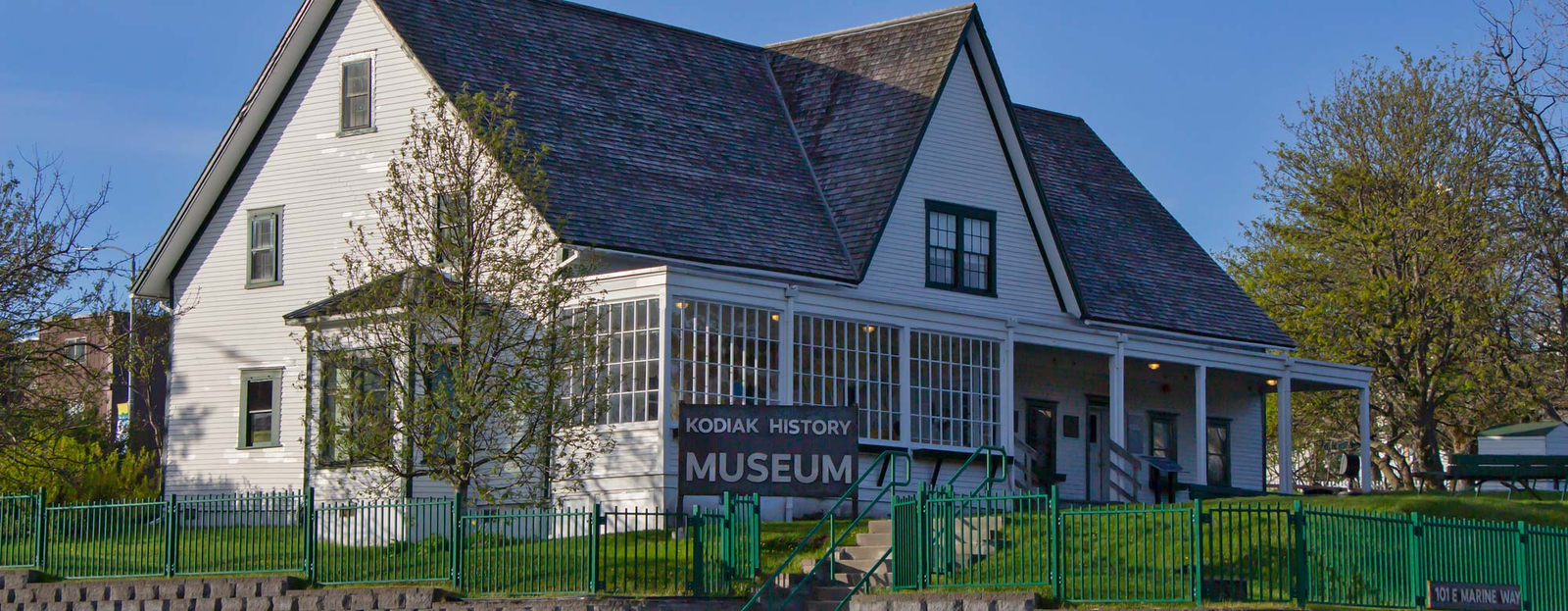
Name and Location: The Baranov Museum, also known as the Kodiak History Museum, is located in Kodiak, Alaska. It is housed in the historic Erskine House, which is one of the oldest buildings in Alaska.
History and Significance: The Erskine House was built in 1808 by the Russian American Company and served as a storehouse and residence for the company’s managers. The Baranov Museum, named after the first manager of the Russian American Company, Alexander Andreyevich Baranov, was established in 1967 to preserve and share the history of Kodiak and the surrounding area.
What to Expect: Visitors to the Baranov Museum can explore exhibits that showcase the history of Kodiak, from the early Russian settlement to the present day. The museum features artifacts, photographs, and documents that highlight the area’s cultural heritage, including the Russian, Alutiiq, and American influences.
Visitor Information: The Baranov Museum is open year-round, with varying hours depending on the season. Admission fees apply, and guided tours are available upon request. The museum also has a gift shop that offers books, art, and other items related to Kodiak’s history and culture.
For an overview of Kodiak history from Russian colonial times through World War II, Baranov Museum engagingly tells the storied tale. The oldest building in the state of Alaska houses the museum, constructed in 1808 to warehouse sea otter pelts destined for imperial Russia.
Now a National Historic Landmark, period rooms decorated with antiques, Native arts and artifacts recreate scenes from Kodiak’s Russian and American pasts tied to the fur trade, WWII military, commercial fishing, and daily life. Outside, stroll the quiet grounds past original Russian blockhouses, church bells, and early Kodiak dwellings. Special exhibits supplement the core collection to delve deeper into aspects of Kodiak history and culture.
Holy Resurrection Russian Orthodox Cathedral
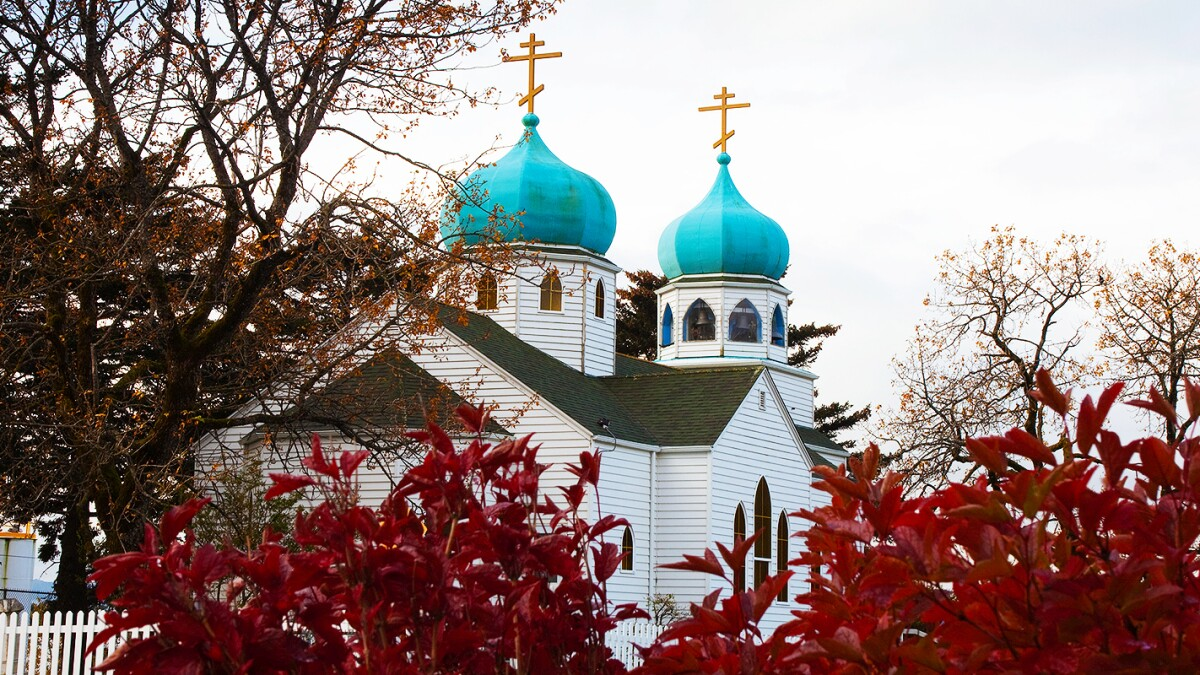
Name and Location: The Holy Resurrection Russian Orthodox Cathedral is located in Kodiak, Alaska. It is a National Historic Landmark and is considered one of the oldest Russian Orthodox churches in North America.
History and Significance: The cathedral was built in 1794 by the Russian American Company and served as the center of religious life for the Russian settlers in Alaska. The cathedral was rebuilt several times over the years due to damage from fires and earthquakes. The current structure dates back to 1945.
What to Expect: Visitors to the Holy Resurrection Russian Orthodox Cathedral can admire the stunning architecture and beautiful iconography of the church. The cathedral features traditional Russian Orthodox design elements, such as onion domes and ornate frescoes. Visitors can also learn about the history of the Russian Orthodox Church in Alaska and its significance to the local community.
Visitor Information: The Holy Resurrection Russian Orthodox Cathedral is open to visitors during scheduled hours, typically in the summer months. Visitors are asked to be respectful of the church’s religious services and traditions. Photography may be permitted inside the cathedral, but visitors should check with the church staff for guidelines.
With its sky blue and gold onion domes overlooking Kodiak’s harbor, the Holy Resurrection Russian Orthodox Cathedral stands prominently on the hillside. As a National Historic Landmark and Alaska’s oldest Russian Orthodox Church still in operation, the cathedral remains the main house of worship for Kodiak’s Russian Orthodox followers.
Completed in 1945 to replace earlier churches destroyed in tsunamis, the ornate cathedral reflects distinctive Russian Orthodox design. Visitors admire the hand-painted icons, rich religious murals and artifacts of carved wood, gold and silver adorning the interior. Attending candlelit vespers allows cultural immersion into ancient Orthodox liturgy still celebrated in the intricate Slavonic language.
Kayaking Among Kodiak’s Fjords and Bays
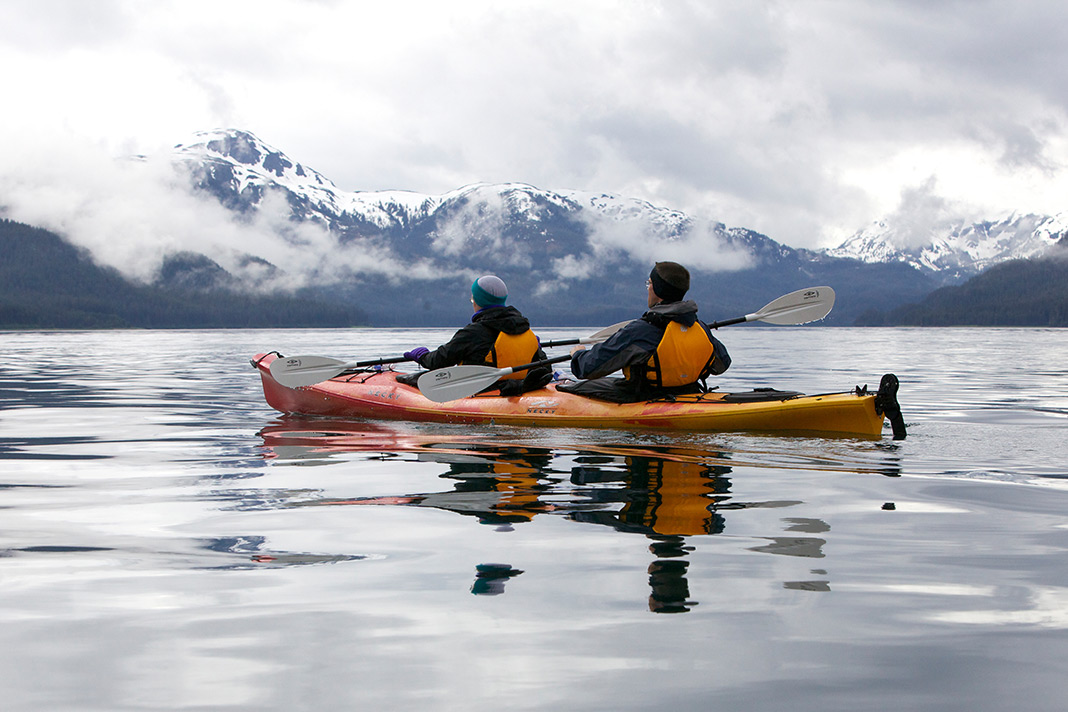
Name and Location: Kayaking among Kodiak’s fjords and bays is a popular outdoor activity for visitors to Kodiak Island, Alaska. The island’s rugged coastline features numerous sheltered bays, inlets, and fjords that are perfect for exploring by kayak.
History and Significance: Kodiak Island’s coastal waters have been used for transportation and subsistence by the Alutiiq people for thousands of years. Today, kayaking allows visitors to experience the island’s stunning natural beauty and rich cultural heritage from a unique perspective.
What to Expect: Kayakers can explore the island’s pristine waters, observing wildlife such as sea otters, puffins, and whales. The island’s fjords and bays offer opportunities for both novice and experienced kayakers, with guided tours available for those who prefer a more structured experience.
Visitor Information: Kayaking tours and rentals are available from several operators in Kodiak, typically from May through September. Visitors should be prepared for changing weather conditions and should always wear appropriate safety gear, such as life jackets. Guided tours often include instruction, equipment, and transportation to and from the launch site.
Sea kayaking opportunities abound along Kodiak’s intricate fjords, sheltered bays and scattered islets waiting to be explored by intrepid paddlers. Rent kayaks or join guided tours to suit your skill level and desired distance while watching for otters, porpoises, seals, sea lions, whales, bald eagles and bears foraging the intertidal zones.
Paddle through towering cliffs carpeted in dense greenery interrupted by thundering waterfalls as you breathe air scented heavily by wildflowers and the salty sea. You may spot puffins and other seabirds nestled into seaside cliffs and hillsides covered in rasping rainforest. Pack a lunch to enjoy the sublime scenery as you picnic along isolated beaches only accessible by kayak.
Afognak Island State Park
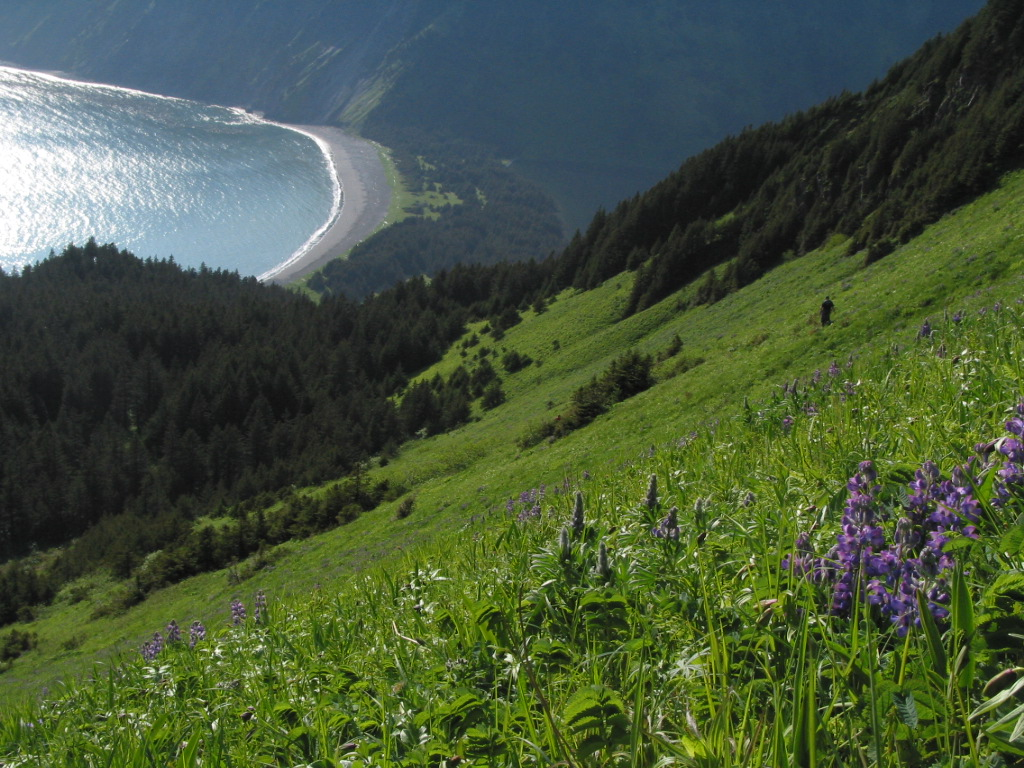
Name and Location: Afognak Island State Park is located on Afognak Island, just north of Kodiak Island in the Gulf of Alaska. The park covers over 75,000 acres of pristine wilderness.
History and Significance: Afognak Island has a long history of human habitation, with the Alutiiq people living on the island for thousands of years. The island was also home to a thriving fishing and logging industry in the early 20th century. The state park was established in 1892 to protect the island’s natural resources and cultural heritage.
What to Expect: Visitors to Afognak Island State Park can enjoy a variety of outdoor activities, including hiking, camping, fishing, and wildlife viewing. The park features dense forests of Sitka spruce and western hemlock, as well as rugged coastlines and pristine lakes and streams. Wildlife in the park includes Kodiak brown bears, Roosevelt elk, and a variety of bird species.
Visitor Information: Afognak Island State Park is remote and can only be accessed by boat or float plane. Visitors should be prepared for rugged, backcountry conditions and should have appropriate gear and supplies. Camping is allowed in designated areas, and visitors should follow Leave No Trace principles to minimize their impact on the environment. Hunting and fishing may be allowed in the park, subject to state regulations.
Encompassing much of Afognak Island just north of Kodiak Island, Afognak Island State Park protects vital habitat for Kodiak brown bears, salmon, whales, seabirds and other wildlife to view in their unspoiled surroundings. Reach Afognak Island via a short flight or ferry ride to explore rugged coastlines, heather-clad hills, rainforest, wildflower meadows, lakes and streams by kayak or on hiking trails that traverse bear country.
Catch sight of moose and Sitka black-tailed deer foraging marshy lowlands as well as Kodiak brown bears digging for clams on a deserted beach under the gaze of bald eagles perched atop a windswept spruce snag. Arrange guided tours for bear viewing by day with overnight stays at designated campgrounds.
Kodiak Military History Museum

Name and Location: The Kodiak Military History Museum is located at the Kodiak Airport in Kodiak, Alaska. The museum is housed in a former U.S. Navy building that was used during World War II.
History and Significance: Kodiak played a significant role in the defense of Alaska during World War II, with the U.S. Navy and other military branches maintaining a strong presence on the island. The Kodiak Military History Museum was established to preserve and share the history of the military’s role in Kodiak and the surrounding area.
What to Expect: Visitors to the Kodiak Military History Museum can explore exhibits that showcase the history of the military in Kodiak, with a focus on World War II. The museum features artifacts, photographs, and documents related to the Navy’s presence on the island, as well as other military branches. Visitors can also learn about the role of Kodiak’s civilians in supporting the war effort.
Visitor Information: The Kodiak Military History Museum is open year-round, with varying hours depending on the season. Admission is free, but donations are accepted. The museum is located at the Kodiak Airport, making it easily accessible for those arriving or departing by air.
Operated by volunteers, Kodiak’s excellent yet underrated Military History Museum collects, preserves and displays artifacts memorializing Kodiak’s strategic military past starting from early Russian colonial conflicts with the indigenous peoples through the World War II-era Fort Greely, Fort Abercrombie and Naval Operating Base.
Authentic memorabilia donated by armed forces veterans joins model warships, dioramas, uniforms, weapons, medals, photographs and maps. Living history exhibits allow visitors to enter recreated period barracks and mess halls. Outdoors, aircraft, artillery guns, missile launchers and military vehicles invite closer inspection. Temporary exhibitions may feature Pearl Harbor artifacts, POW crafts, WWI trench warfare or the 1989 Exxon Valdez oil spill response.
Step Beach
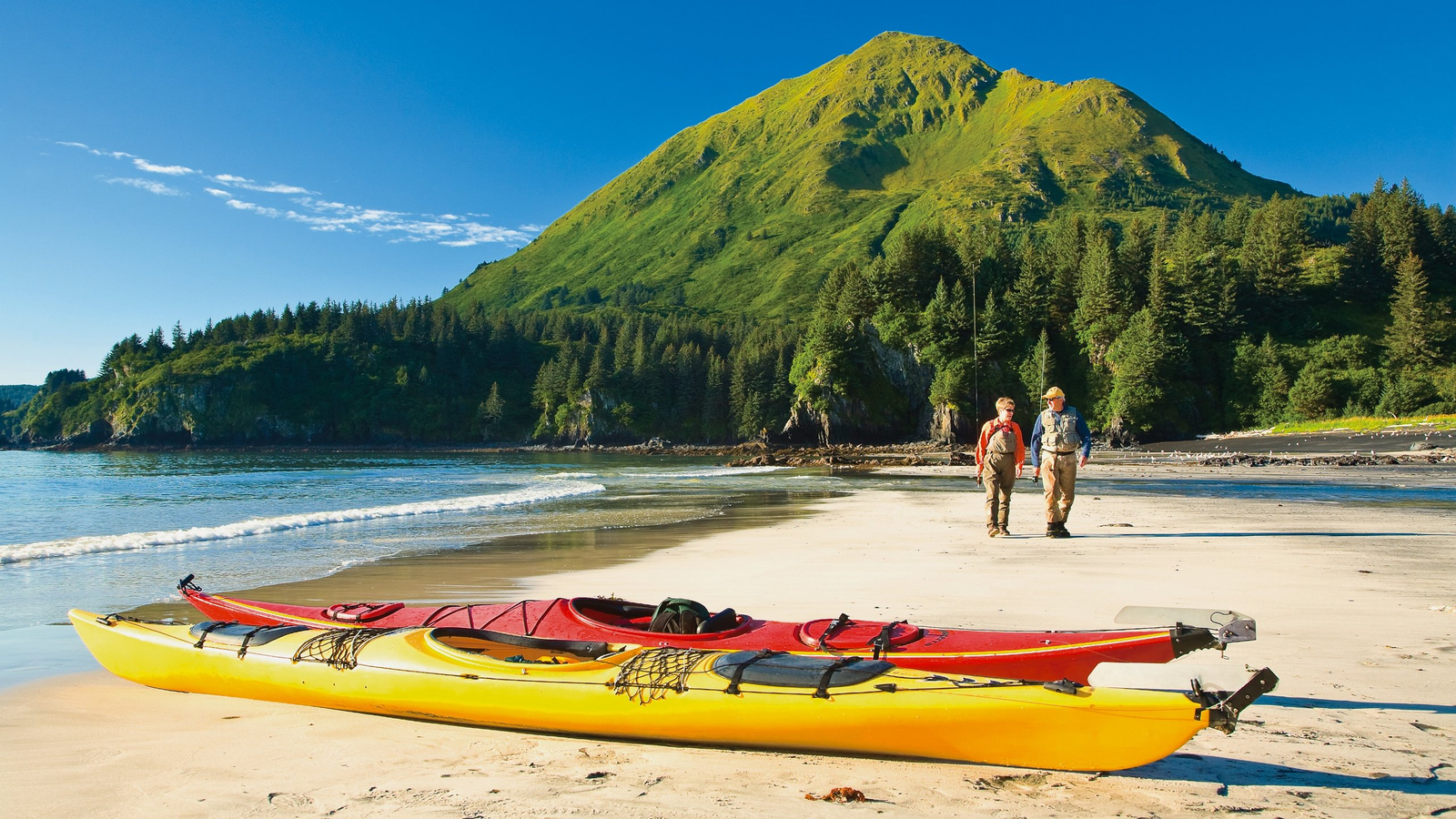
Name and Location: Step Beach is located in Kodiak, Alaska, just a short drive from the city center. This picturesque beach is a popular spot for locals and visitors alike.
History and Significance: Step Beach has long been a favorite recreation spot for Kodiak residents, offering a peaceful escape from the hustle and bustle of daily life. The beach is named for its unique rock formations that resemble steps leading down to the water’s edge.
What to Expect: Visitors to Step Beach can enjoy a variety of activities, including beachcombing, picnicking, and wildlife viewing. The beach is known for its stunning views of the surrounding mountains and ocean, and visitors may spot whales, sea lions, and other marine life from the shore. The beach is also a popular spot for surfing, though the water can be cold and challenging.
Visitor Information: Step Beach is open year-round and is accessible by car, with a small parking area available. Visitors should be prepared for cool, wet weather and should dress in layers. The beach is not supervised, and visitors should exercise caution when swimming or surfing due to the cold water and strong currents. Visitors should also be respectful of the environment and should pack out any trash they bring with them.
Famed for photogenic vistas at sunset, beautiful Step Beach lies a scenic 9 miles north from the city of Kodiak. Stretching over a mile between sheltered Ugak and Kiliuda Bays, this family-friendly beach features tidal pools brimming with starfish, urchins and anemones. Scan the sapphire waters offshore for whales, otters and porpoises playing.
Comb the windswept beach for ocean polished stones, shells and Japanese glass float fishing net floats possibly dating from tsunami debris. At low tide, scramble out along the rocky points bounding each end of Step Beach to watch sea lions and puffins. Picnic areas encourage lingering on this iconic beach with the Chiniak Mountains as a backdrop on warm sunny days.
Clamming on Near Island
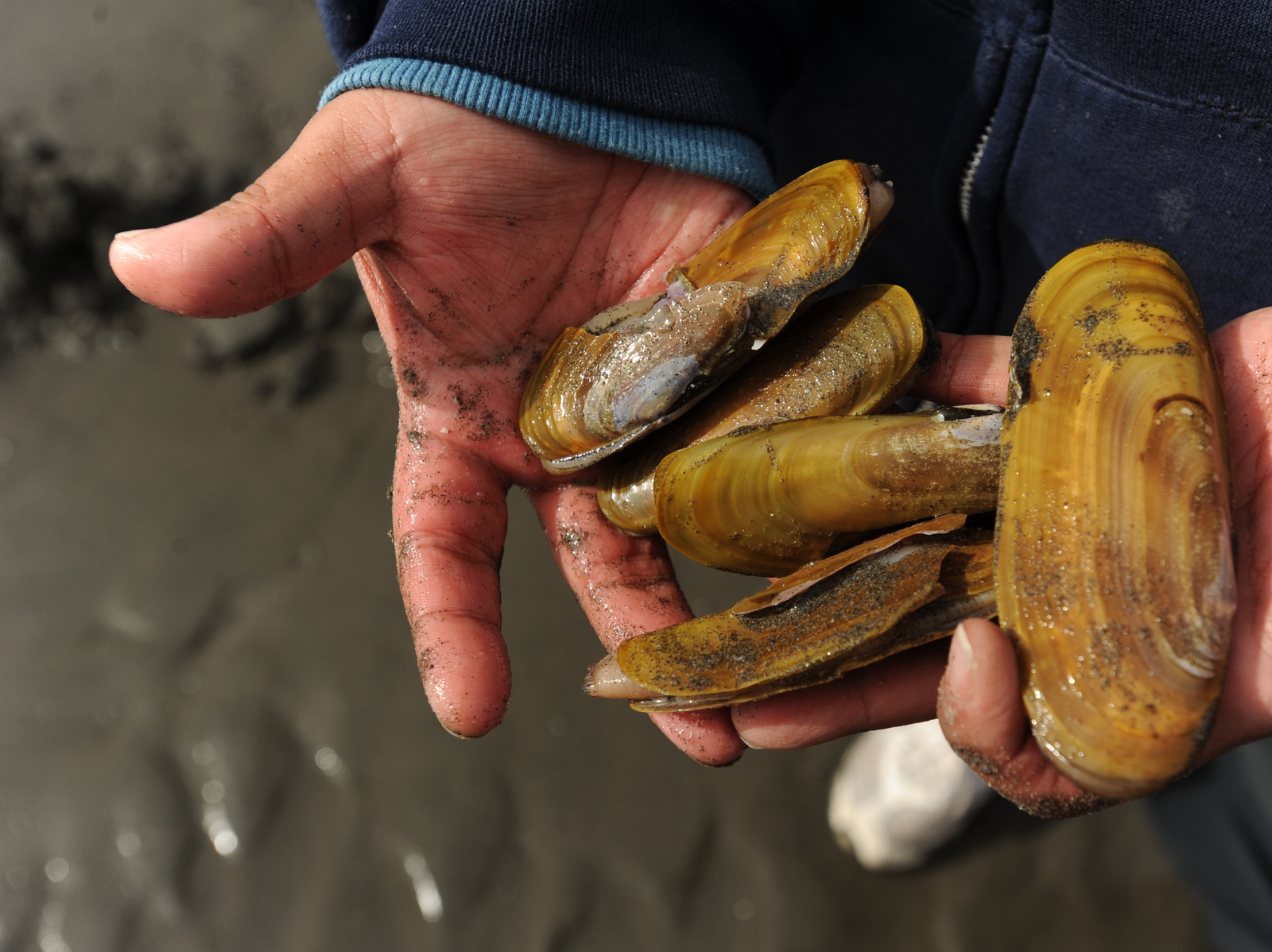
Name and Location: Clamming on Near Island is a popular activity for visitors to Kodiak, Alaska. Near Island is located just a short boat ride from the city of Kodiak and is known for its abundant razor clam beds.
History and Significance: Clamming has been a traditional subsistence activity for the Alutiiq people of Kodiak for thousands of years. Today, clamming remains a popular recreational activity for locals and visitors, offering a fun and rewarding way to experience the island’s natural bounty.
What to Expect: Visitors to Near Island can dig for razor clams during low tide, using shovels or specialized clam guns. The best time to go clamming is during the spring and summer months, when the tides are lowest. Clammers can expect to find plenty of razor clams, which are prized for their delicate flavor and tender texture.
Visitor Information: Visitors interested in clamming on Near Island should check the local tide tables and regulations before heading out. A fishing license is required for anyone over the age of 18, and there are limits on the number of clams that can be harvested per person per day. Visitors should also be prepared for wet, muddy conditions and should wear appropriate footwear and clothing. Guided clamming tours are available from several operators in Kodiak, offering transportation, equipment, and instruction for novice clammers.
For delicious razor and butter clams ripe for the taking, join guided expeditions out to Near Island accessible only by boat. Providing the best clamming on Kodiak Island, the sandy-bottomed shallows surrounding uninhabited Near Island contain abundant razor and butter clams buried a few inches beneath the sand. Cruise through scenic waters watching for whales, porpoises and seabird rookeries along the way before arriving at clamming grounds.
There, your experienced guides teach proper clam harvesting techniques during low tides to gather legal-sized clams for a beachside lunch. You may also try your hand at saltwater fly fishing for rockfish, lingcod and salmon or explore quiet coves by kayak in free time before returning to Kodiak with your bucketfuls of fresh clams.
Conclusion
Teeming with abundant wildlife, stunning scenery, rich culture and natural attractions, Kodiak offers memorable adventures during any season whether bear viewing, flightseeing, hiking, fishing, foraging for wild berries and clams, touring museums or photographing panoramic vistas along rugged coastlines.
With far less crowds, costs and commercialization than other Alaskan hotspots, Kodiak’s slower pace invites deeper immersion into nature, Native Alutiiq heritage, Russian history and military ties to uncover the island’s intriguing yet lesser-known stories waiting to captivate visitors who set foot upon her wild shores.

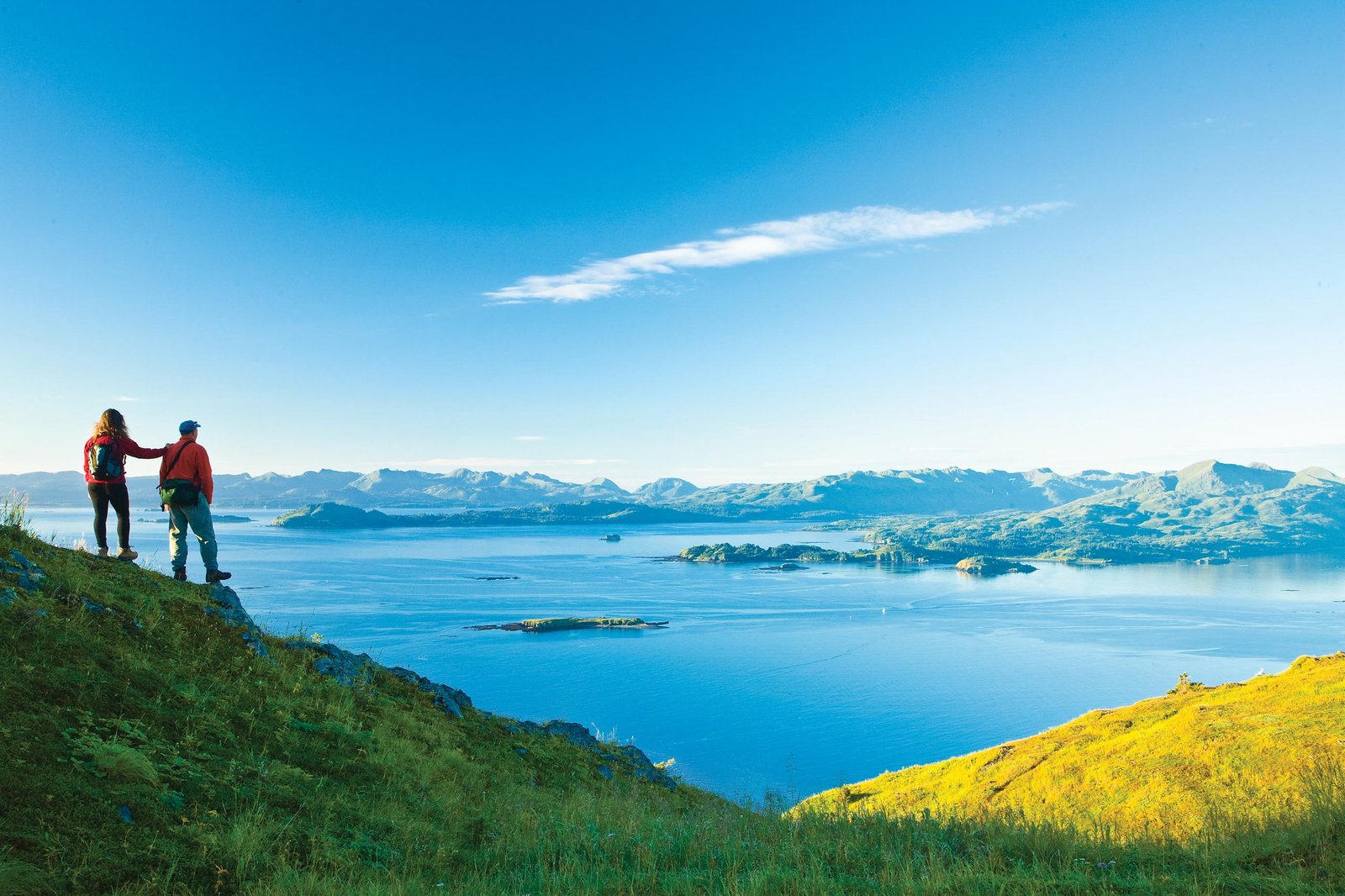

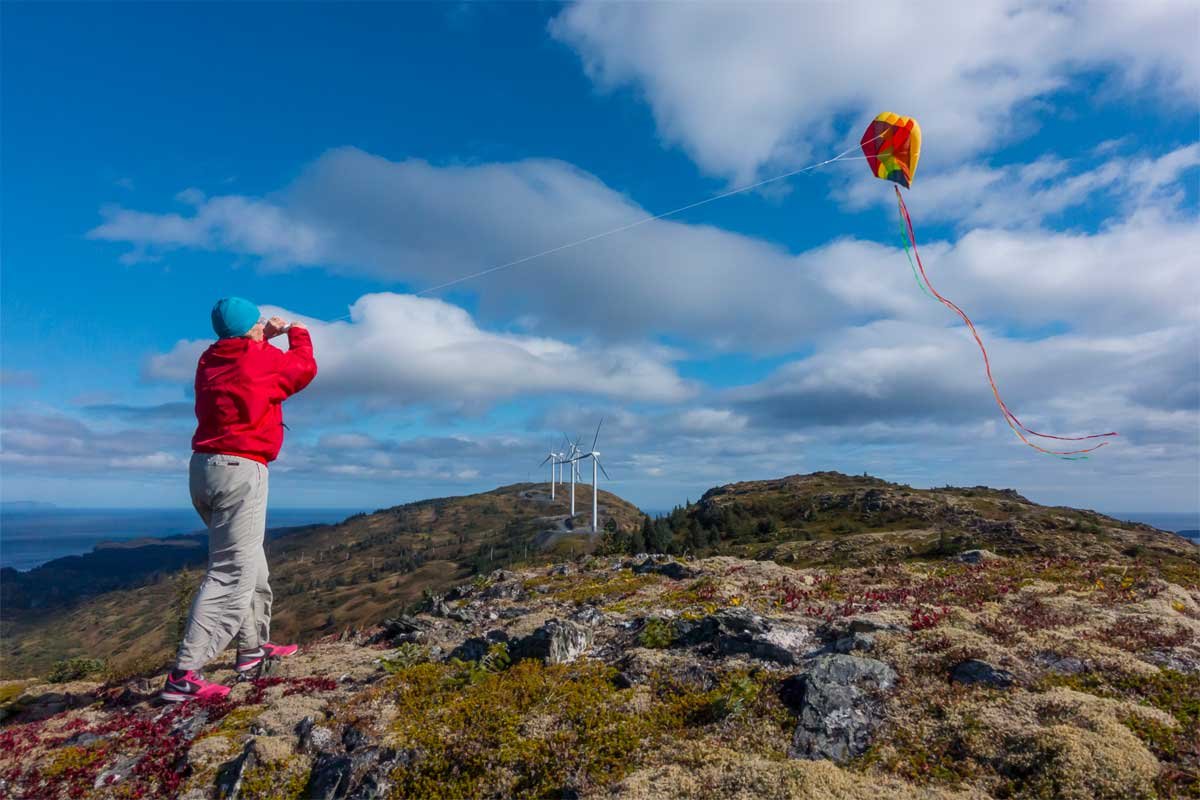
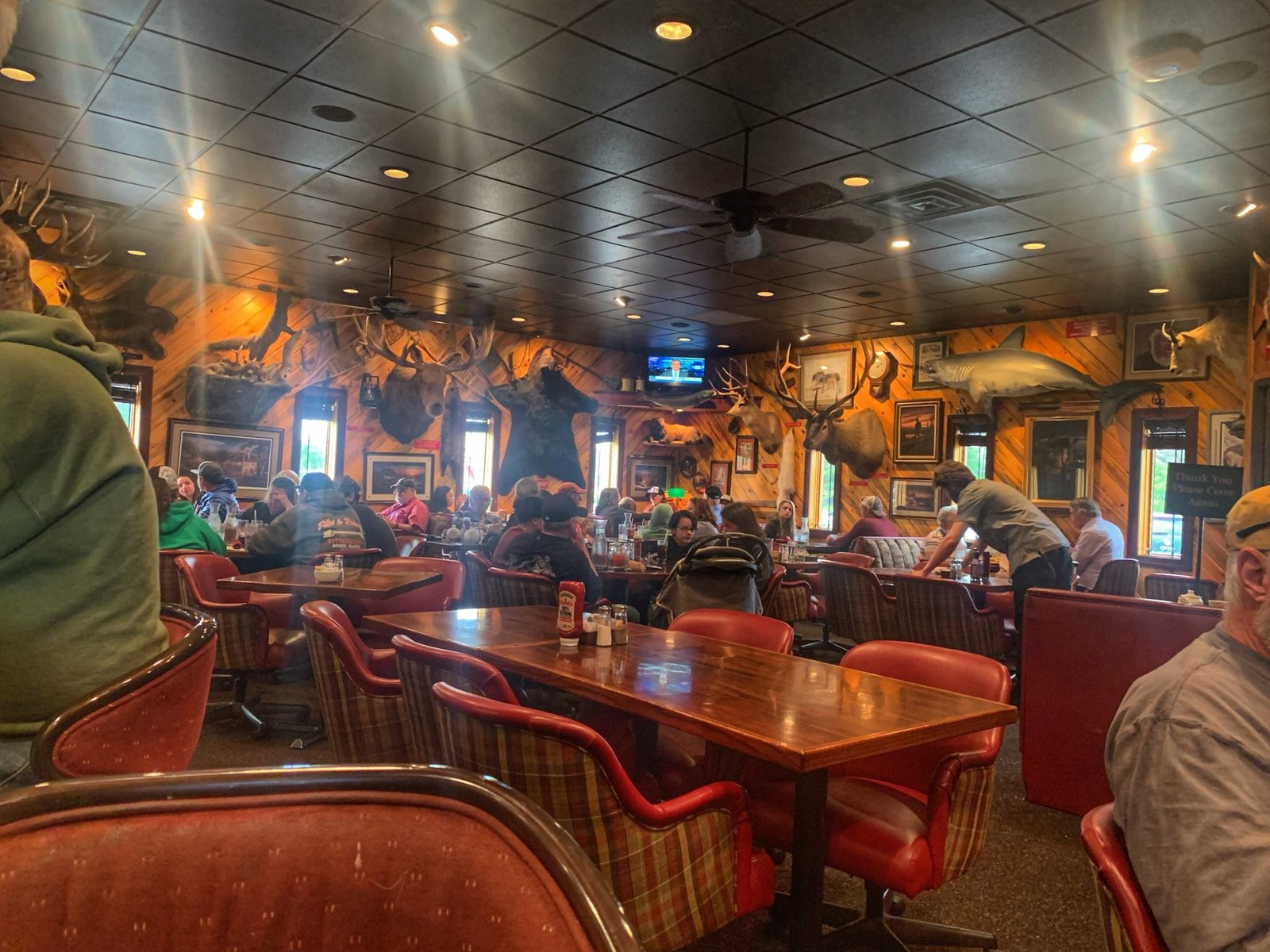
Join the Conversation